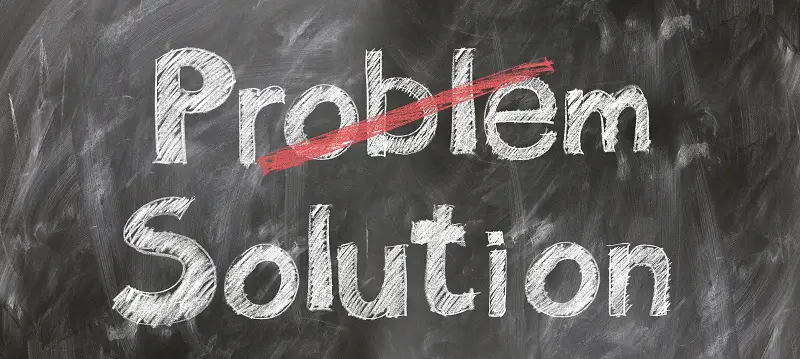Everyday life will always have some hassles, whatever your situation. But having a disability can create extra challenges, especially if things aren’t set up in the right way for you. Lucy, a writer and editor with cerebral palsy, details the 10 ways she’s found to make life a little easier.
Being disabled means that we often do things differently to able-bodied people, and the most noticeable difference for me as a wheelchair user is that I get around using my wheelchair instead of my legs.
But that’s just the most obvious thing. Over the years I’ve developed and discovered many solutions, tips and tricks to make life easier…
1. Pill storage and pill boxes
I need to take pills every day, but the boxes or bottles they come in are difficult and cumbersome to open, and they take up a lot of space, so using the kitchen as a pharmacy doesn’t seem like a good idea.
I’ve now found the ideal solution: a cosmetics bag. It’s nothing fancy, in fact I think I bought it from Boots for £5, but it works for me: wrap each tablet in foil and keep them in the bag, so they’re all in the same place when you need them.
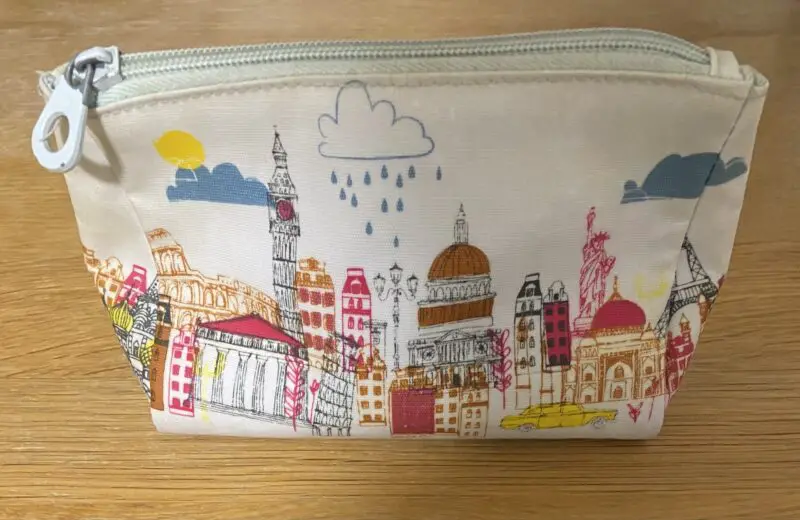
Since I only take 3 tablets, the bag is a practical solution for me, but if my dosage increases, I would definitely need a pillbox. Also, if you have trouble remembering your doses or take many different types of medication, I highly recommend a pillbox.
The Disability Horizons Shop sells a range of pillboxes, including some stylish versions that come in leather cases, that are worth buying for the organisational benefits alone.
Some tablet boxes even tell you what to take and when to take it – handy if you have memory or eyesight problems, or just want one less thing to think about.
2. Smart lighting and heating control
In my house, we have a system installed called Lightwave that allows me to turn the lights on and off using the Lightwave app on my phone or by voice, which is super helpful as I previously couldn’t reach the light sockets.
It’s also handy when you remember you left a light on in another room, especially when you’re not in your wheelchair, so you can turn it off without having to move.
I chose Lightwave because their system uses smart sockets instead of smart bulbs, and since I have a lot of fixtures in my house that don’t fit smart bulbs, this was cheaper for me.
As for the heating, you can adjust it from your smartphone or by voice using Alexa, which means you’ll save money on your energy bill and be more comfortable. I chose the Tado system because it was on sale at the time, and it works with Alexa (which doubles as a speaker), Apple HomeKit, and Google Assistant.
All smart heating controls allow for phone and voice control so you can shop around and it’s important to check the compatibility of your boiler with your smart system before you buy.
3. Attach ribbons to doors and other hard-to-reach places
This may sound really simple, but it’s a perfect example of how an object made for one purpose can be used for another. For years I have struggled with doors, especially doors that I want to close behind me.
Putting something long on the door handle allows you to pull the door open or closed if it’s not completely closed. I use ribbon because it looks nice and comes in a variety of colors.
Ribbon is readily available from craft stores and, as it’s not a disability aid, is cheap – a roll of ribbon will cost around £3, depending on how much you need.
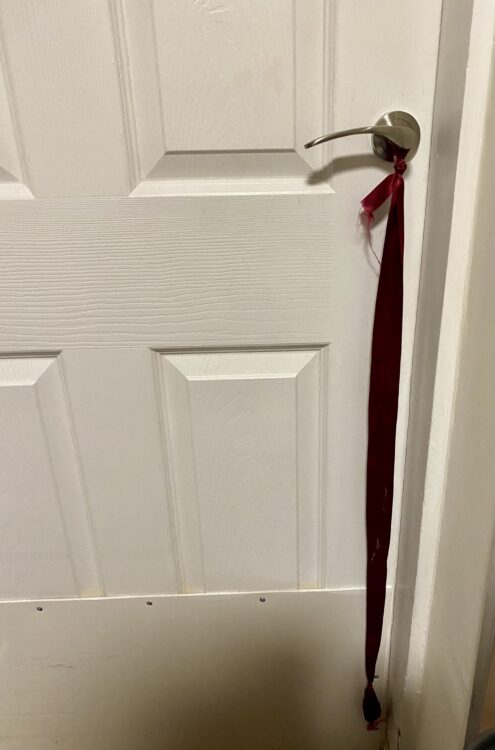
Ribbons, strings and cords can be used to reach places that are hard to reach – I know people who attach cords to their manual wheelchairs so they can pull the wheelchair from a distance, or have their service dogs pull them.
If grip or strength issues make it hard to open doors, try our Tru Grip Door Extender or T-Pull Door Closer for wheelchair users, or this foldable grabber stick to help you pick up or reach for objects that are far away.
4. Apps
In addition to Lightwave and Tado, there are also apps for the smart plugs you plug your lamps and TV into, and an app called Kasa that works with Alexa but can also connect to Samsung SmartThings and Google Home smart hubs.
I couldn’t get from AB without Apple Maps and Google Maps either – I’m a terrible navigator!There are times when one works better than the other so I use both.
Patient access apps allow you to schedule a doctor’s appointment without having to call your GP.
I also sign up for the prescription delivery service Pharmacy2U, which has been extremely useful, especially during the COVID-19 pandemic. It means I can place recurring prescription orders with just a few taps of the screen.
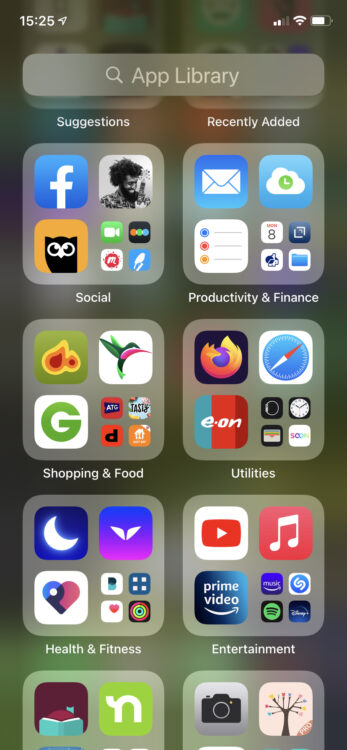
5. Carrying aids
I have weak arms and grip strength issues so I find it difficult to carry things, so I use five-fingered oven gloves like the one linked above when holding or carrying hot mugs.
That way, you won’t just be holding onto the handlebars – you can also hold onto gloves while carrying dinner to the table for an extra grip.
I also use the Trabasac lap tray to add stability when carrying my luggage. Before COVID, I always brought it with me to restaurants and cafes to use when I couldn’t eat at the table because the table height was not right for me.
I have the Curve pictured below, but Trabasack has a few different versions in different sizes and colors that can double as wheelchair bags.

6. Bathing step instead of transfer step
I’m short, so sometimes I need a bit more height to transfer to a shower seat or bed when I’m out and about, and to help with this I use a flat bath step similar to the one I linked to here that I bought from Naidex about 15 years ago.
Official “transfer steps” marketed specifically to disabled and elderly people are more expensive than standard steps, but they are said to be the most stable, and therefore safest, so check that the alternative is suitable for you before buying.
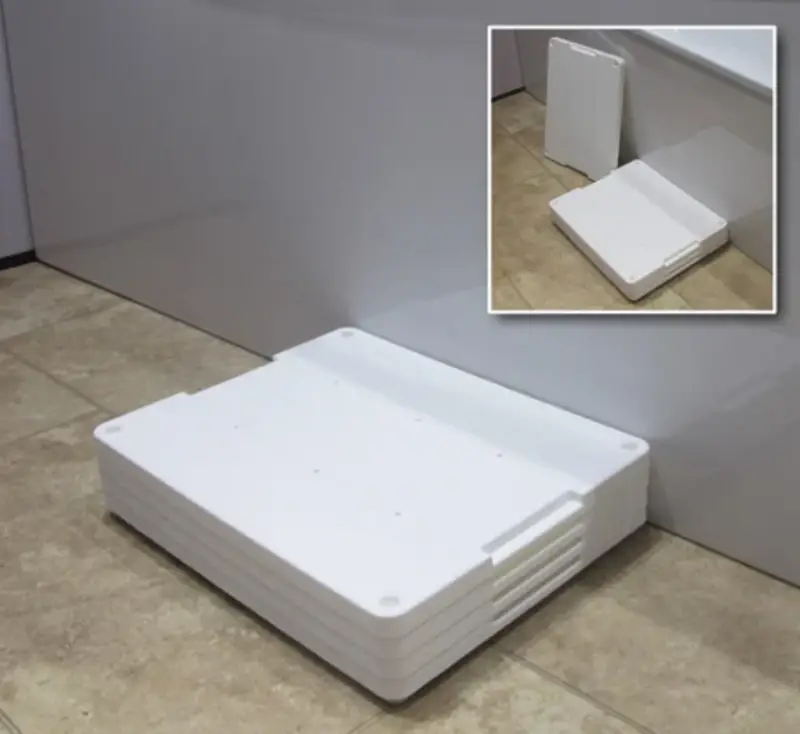
7. Suction grab rail
If you have balance or motor skills issues, grab bars are a godsend, especially when you’re away from home. I use grab bars when transferring from my chair, but they have to be in the right position.
I take my Mobeli grab rail everywhere I go, it has suction cups so you can mount it on any smooth wall.
Grab bars can be very cheap or very expensive depending on how much weight you can carry and what you can hold on to. Mobeli grab bars are expensive, but I’ve found that the cheaper ones tend to fall off the wall. Safety first.
If you can bear weight on your feet, the cheaper options may be sufficient. If possible, we always recommend having an able-bodied person test the grab bars before use.
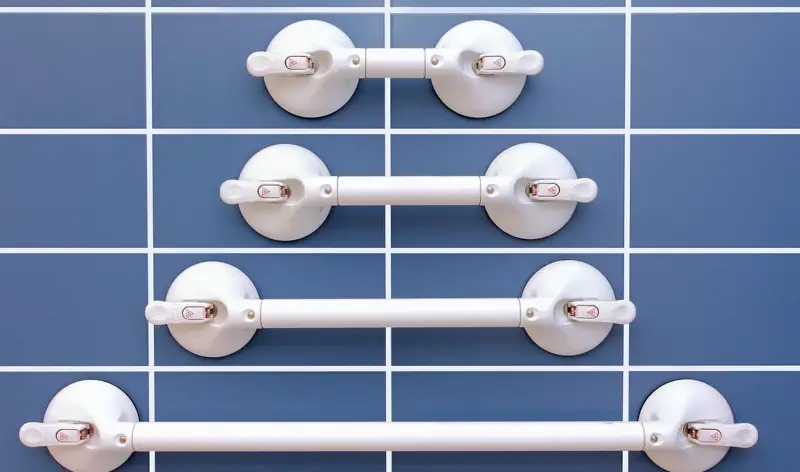
8. Hair dryer stand and hot brush
This isn’t something I use, but it’s a useful tip I got from a DHorizons Tribe member in our Facebook group.
She uses a hairdryer stand and a hot styling brush to style her hair and make it stand up.
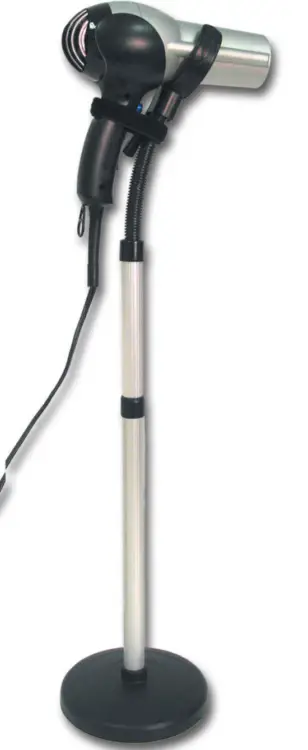
A hair dryer stand can be freestanding or wall mounted and holds your hair dryer in place so you don’t have to hold it, which is especially useful if you have limited dexterity or strength.
Similarly, a hot brush is a hairbrush that heats up and is used as a styling tool, but also as an alternative to blow drying your hair.
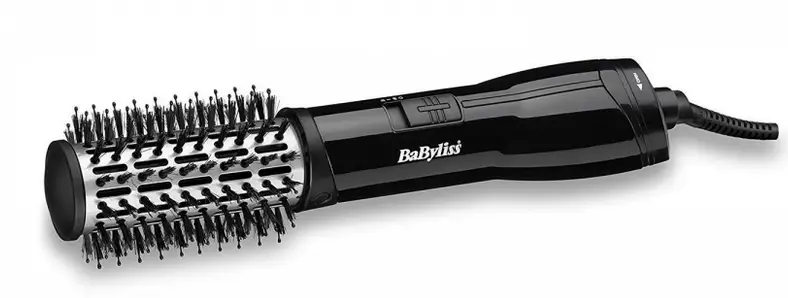
9. Smartwatch
Caregiver alarms will always be around, and are a lifeline to independence for many. But for some, including me, a smartwatch can do the job just as well. And it’s cheaper. I have an iPhone 11 and an Apple Watch 6. I chose the cellular and GPS version because I wanted the ability to add a cellular plan if my cellular connection was spotty. However, the Bluetooth connection works from a few rooms away, so I didn’t want to have to pay extra for a watch plan. I wanted the latest technology, and it works this way with any Apple Watch model. There are other manufacturers out there, but this is the best setup for me.
Smartwatches can also send reminders, act as calendars, monitor blood pressure and tell time.
Most watches have fall sensors, and the Apple Watch now has a hand-washing feature in response to the coronavirus.
Smartwatches aren’t for everyone — some require an external call center and a person on the phone — but for those who just want the peace of mind of knowing they can call a friend or family member if they’re in trouble, a smartwatch could be a good option.
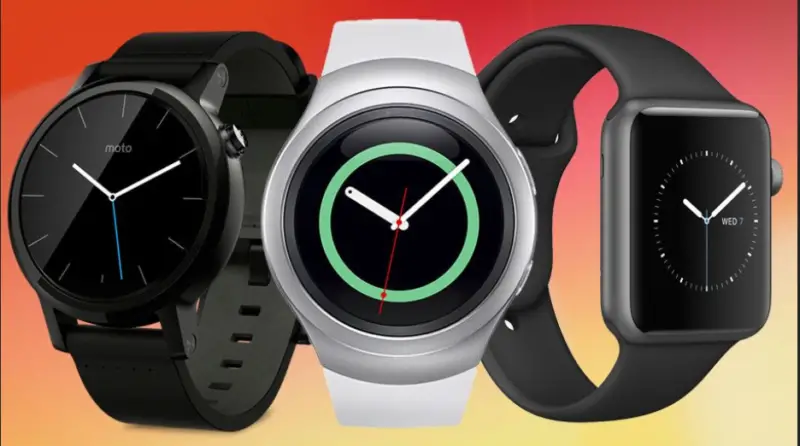
10. Velcro Veterinary Wrap Tape
Velcro is my go-to for keeping things in place. I have it on the back of my phone, my iPad, and my remote control.
If, like me, your disability makes you prone to dropping things, Velcro is an inexpensive way to keep things from falling.
Veterinary wrap tape is officially used as an animal bandage, but because it’s non-slip and sticky, it’s perfect for adding a non-slip effect to smooth surfaces like remote controls and credit cards, making them easier to pick up.
I’ve even used vet tape to wrap the armrests of my wheelchair when they started to tear. It’s barely noticeable, black on black, non-sticky and more durable than packing tape. It’s also softer and comes in a variety of colors.
You can also try Cat Tongue Grip tape, which works similarly to Velcro but is clear, making it a good choice if you want something more discreet. It’s also made from non-abrasive, latex-free, and recyclable materials.
I haven’t tried it myself yet, but you can read my Cat Tongue griptape review to find out more.
Lucy Currier
This article contains affiliate links. If you purchase any of the products, we will donate a small amount to help support Disability Horizons at no cost to you.
To function, the affiliate scheme uses cookies to track users who have visited other websites from our articles. You can accept or decline the use of these cookies. For more information, please read our cookie policy.
Learn more about Disability Horizons…

